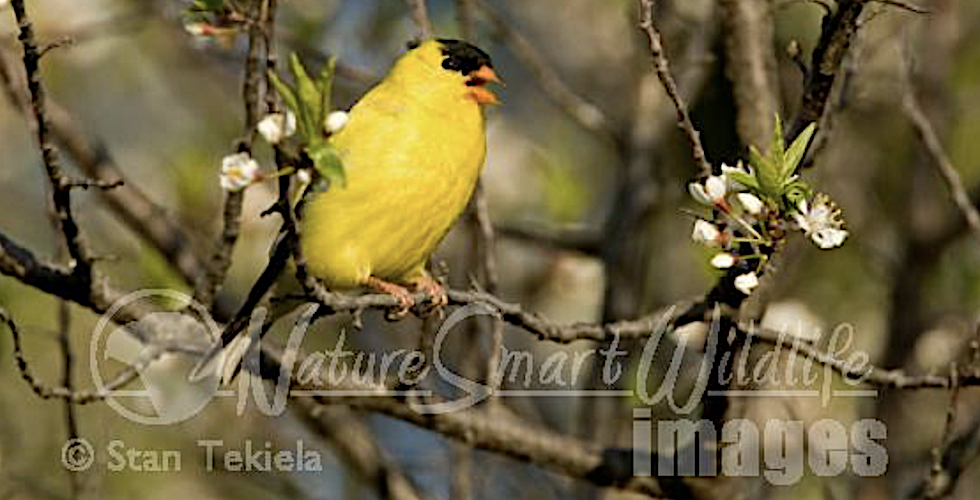
The American Goldfinch Has a Bad Case of Wanderlust
Wildlife photographer and naturalist Stan Tekiela takes us to his favorite patch of late-blooming flowers to observe the Goldfinch.
At this time of year there aren’t a lot of flowers blooming, so this patch is like a magnet in attracting the few remaining hummingbirds and a wonderful bright yellow bird called the American Goldfinch (Spinus tristis).
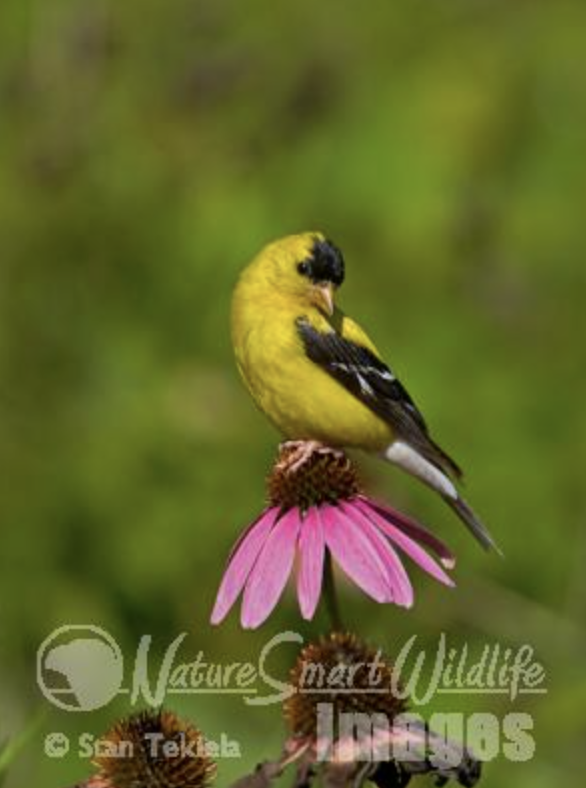
The American Goldfinch (male) is a small yellow-and-black finch found throughout most of the U.S. But you don’t see them all the time.
Unlike other migratory birds, the American Goldfinch has a bad case of wanderlust. These birds move around a lot, finding different sources of food.
According to several leg band studies, American Goldfinch that have been banded in southern states have ended up in northern states during winter and vice versa. They don’t have predictable migratory patterns like other migratory birds. They seem to just wander around following food sources.
Speaking of food, the American Goldfinch feeds nearly exclusively on seeds. This is called being a granivore. Seeds are so important to the American Goldfinch, in fact, that the bird will hold off on breeding/reproduction until mid- to late summer, in order to time the hatching of chicks with the ripening of many seed crops. In particular, the Goldfinch is waiting for the thistle seeds to ripen.
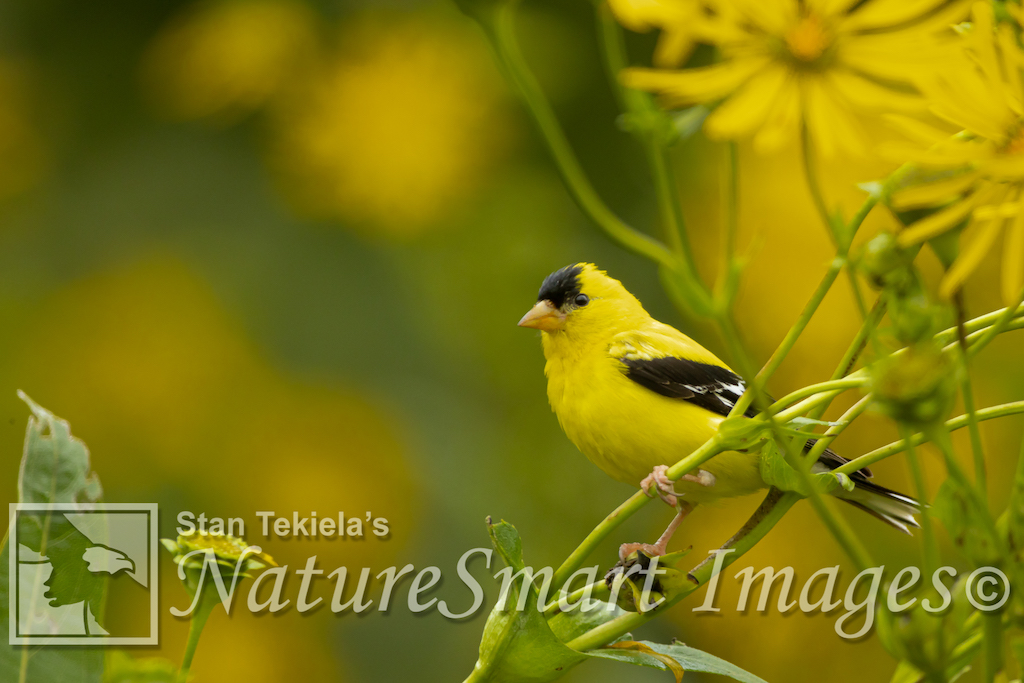
There are many species or varieties of thistle. Most are 2 to 3 feet tall with blue or purple flowers and tend to grow in open fields, along roadsides, in ditches, and in farmers’ fields. They usually have prickles or thorns and often grow in large groups or clusters. In general, the thistles are not well liked by people, but the American Goldfinch loves them.
American Goldfinch feed their young an exclusive seed diet. Both the male and female will feed their babies. Now here is the interesting part. After feeding upon the ripened seeds, the adults will return to the nest and regurgitate a mass of ground-up seeds along with a milky liquid. Stick with me for a moment while I explain why this is interesting.
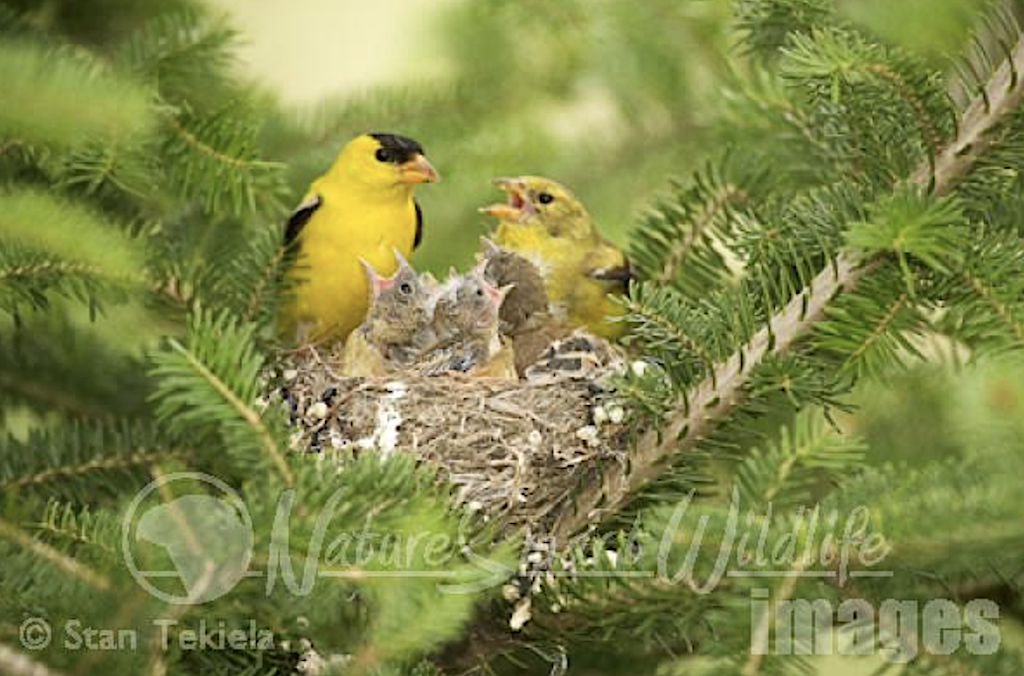
A bird’s digestive system has two stomachs. The first is called the gizzard. It is a thick muscular-walled stomach with a rough, bumpy inner lining that is used to grind up the food in a dry environment. This is important because birds don’t have teeth, and they need this front-line stomach to grind their food. The problem is, no real digesting occurs in the gizzard, just a breaking up of the food. Digestion takes place in the second stomach where the stomach acids are located. So, in Goldfinches, the lining of the gizzard sheds layers of liquid-like cells that act as a seed lubricant when the seeds are regurgitated to feed the young birds—a highly unusual trait.
The American Goldfinch chicks grow extremely fast on the seed/liquid diet. Unlike other birds, Goldfinch parents only feed their babies about once every 1 to 2 hours. Compare that to other species of birds that feed their young with insects many times per hour.
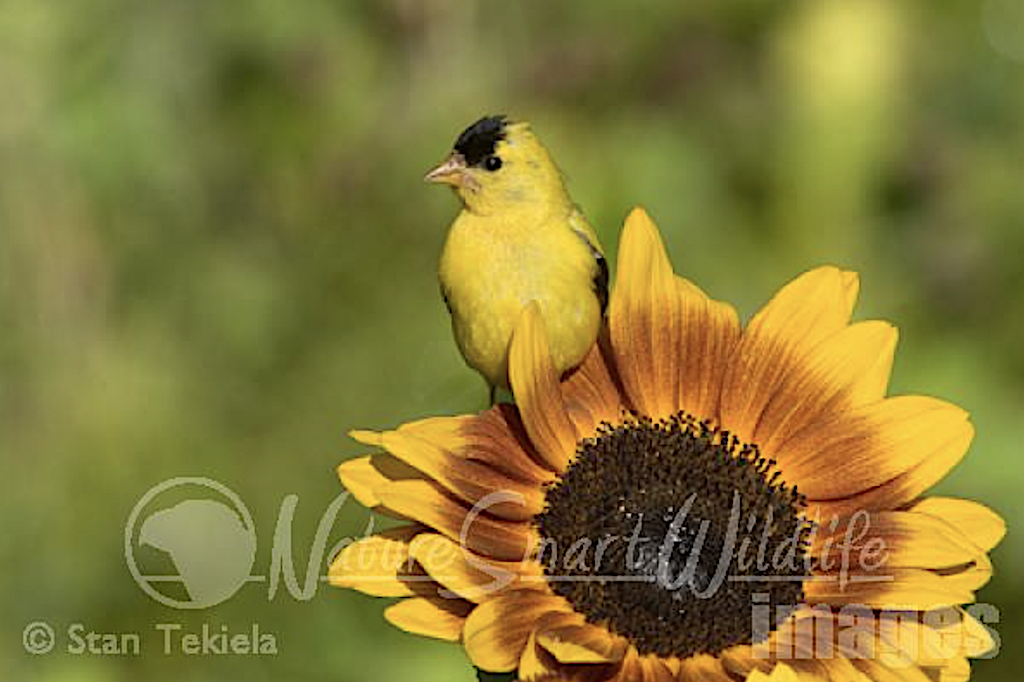
You can attract these amazing birds to your yard by offering a feeder that holds a special tiny seed called Nyjer. You will need a feeder designed especially for this seed. It needs to have tiny ports or openings to allow just a few of the tiny Nyjer seeds to be dispensed. The seeds are so small that if you put the Nyjer seed in a regular feeder the Nyjer will just flow right out of the large openings and onto the ground.
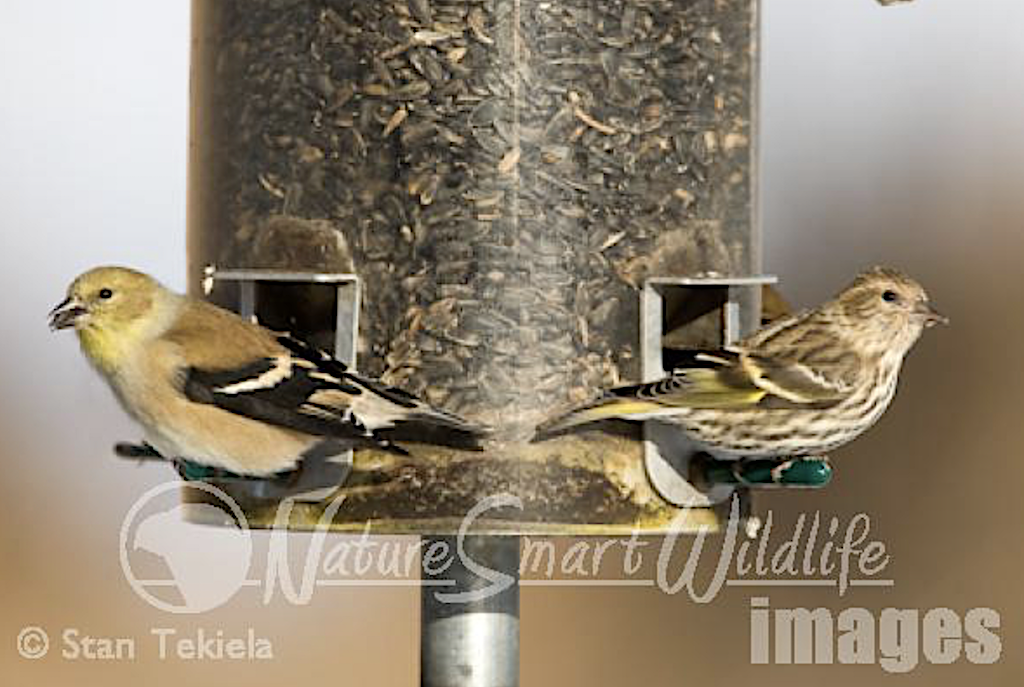
The Nyjer plant is native to Ethiopia. However, commercial Nyjer seeds are grown in Africa and India and contain high amounts of proteins and nutritious oils that the birds love. Before packing and shipping, the seeds are sterilized by intense heat to prevent germination. This is important to prevent nonnative plants from being established. If you want to increase bird activity at your feeding stations, consider adding a Nyjer seed feeder.
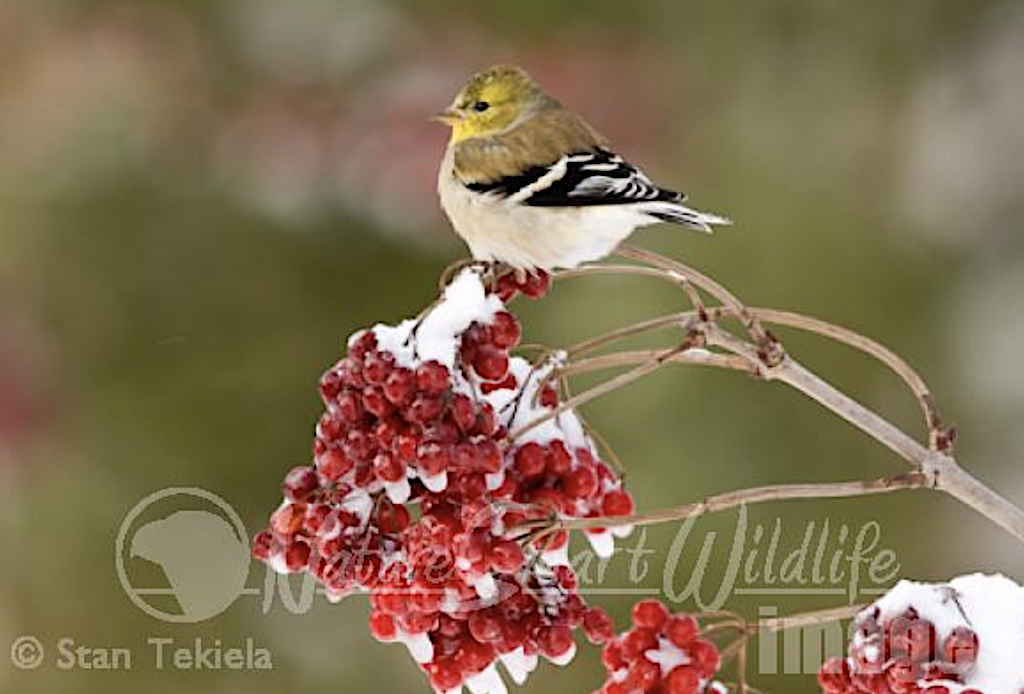
If you enjoyed Stan’s post, you may consider one of his amazing nature books: Majestic Eagles; The Lives of Wolves, Coyotes, and Foxes; or Backyard Birds: Welcomed Guests at our Gardens and Feeders.
You can follow Stan on Facebook and Twitter, or contact him via his web page. Stan’s nationally syndicated NatureSmart Column appears in more than 25 cities spanning 5 states (Minnesota, Wisconsin, Michigan, Illinois, and Pennsylvania) and is circulated to more than 750,000 readers.
For more stories about wildlife and nature, sign up for our newsletter now!


